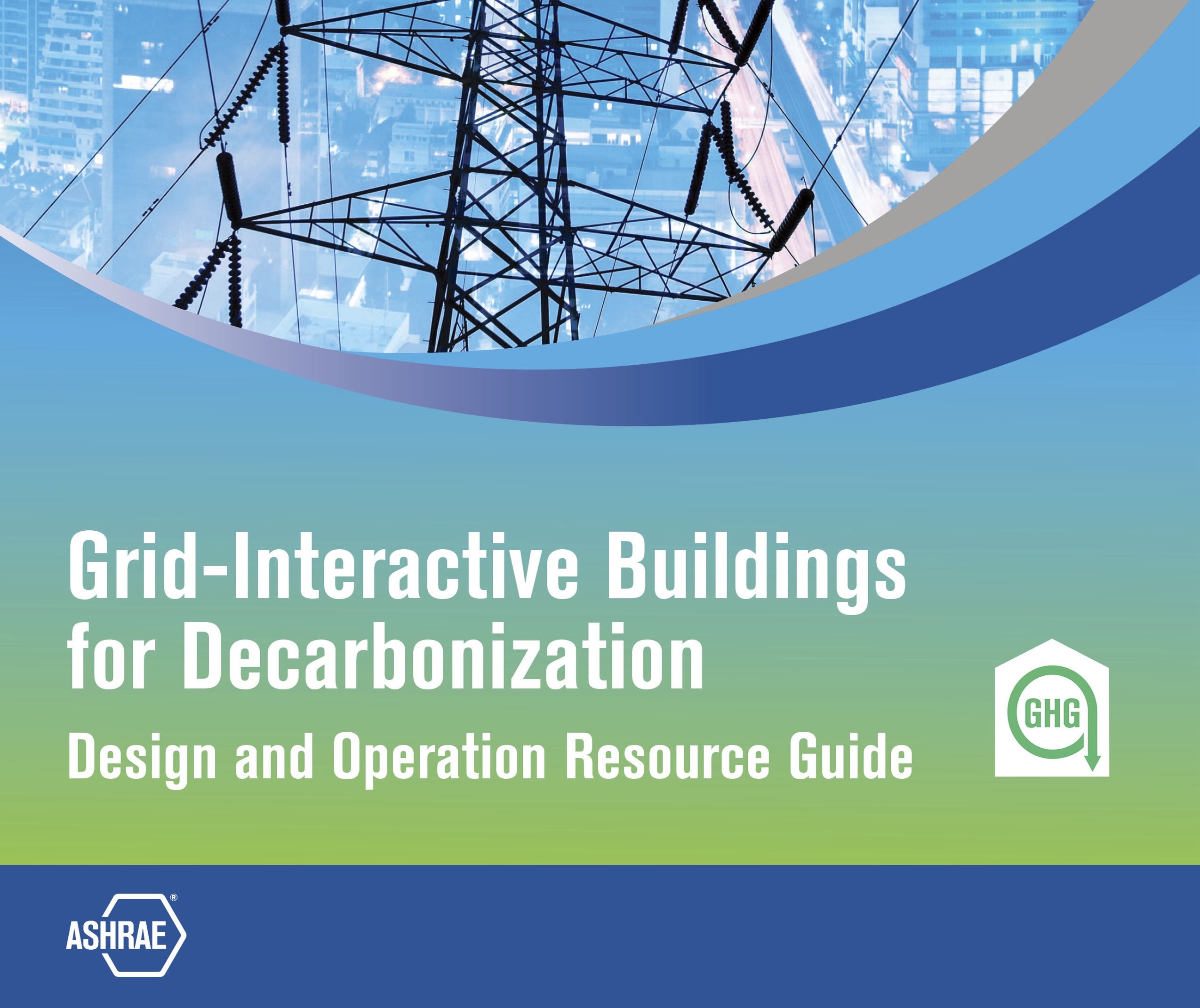A guide focusing on the critical role of grid interactivity in building decarbonization was recently published by ASHRAE.
The Grid-Interactive Buildings for Decarbonization: Design and Operation Resource Guide provides information on maximizing carbon reduction through buildings’ interaction with the electric power grid. The guide discusses smart technologies, renewable energy sources, and energy storage systems that optimize energy consumption and generation.
These technologies allow buildings to respond in real-time to grid signals, reducing overall demand and greenhouse gas emissions. The guide offers best practices, design considerations, and operational guidelines to target the three primary value streams of grid integration:
- Reduced Carbon Emissions: Covers how to make significant contributions to reducing carbon emissions through smart building-grid interaction.
- Cost Savings: Offers strategies to optimize energy usage and save on operational costs.
- Resiliency: Provides options to enhance a building's ability to withstand and adapt to changing grid conditions, ensuring uninterrupted operations.
The guide primarily focuses on commercial and multifamily buildings but also includes relevant information for the residential and industrial sectors. In addition to design guidance, the resource guide provides operational recommendations for new and existing buildings.
Related Stories
Codes and Standards | Feb 28, 2017
Concern grows for high tide flood vulnerability in Mid-Atlantic states
Washington, D.C., and Annapolis, Md., could flood every three days by 2045.
Codes and Standards | Feb 27, 2017
Green building saves operating costs and boosts asset value
A new report shows 14% cost savings and a 7% increase in value when green standards are met.
Codes and Standards | Feb 24, 2017
Scant data hampering energy, water efficiency at sports venues
New NIBS report says baseline information needs further development.
Codes and Standards | Feb 22, 2017
Plans for WELL Building Standard include linkage with other green building standards
The planned updated version will be customizable for any building type.
Codes and Standards | Feb 21, 2017
Aging building code inspectors and government belt-tightening could cause crisis
Inspectors are edging toward retirement with no understudies in place.
Codes and Standards | Feb 20, 2017
AISI publishes three new cold-formed steel framing research reports
Seismic simulation, roof trusses, steel-to-steel and sheathing-to-steel connections are examined in the reports.
Codes and Standards | Feb 17, 2017
New energy design guide for metal building systems now available
The second edition incorporates more recent IECC and ASHRAE standards.
Codes and Standards | Feb 14, 2017
Paper outlines how BREEAM credits can be used for WELL standard compliance
The paper provides guidance on how to streamline pursuit of dual certification.
Codes and Standards | Feb 14, 2017
Evidence mounts on health, productivity benefits of sustainable work spaces
High-performance green buildings are linked to better job performance.
Codes and Standards | Feb 13, 2017
Calif. commission approves ‘emergency’ balcony code changes
The changes apply to multifamily, hotels, state-owned buildings, and public schools.

















